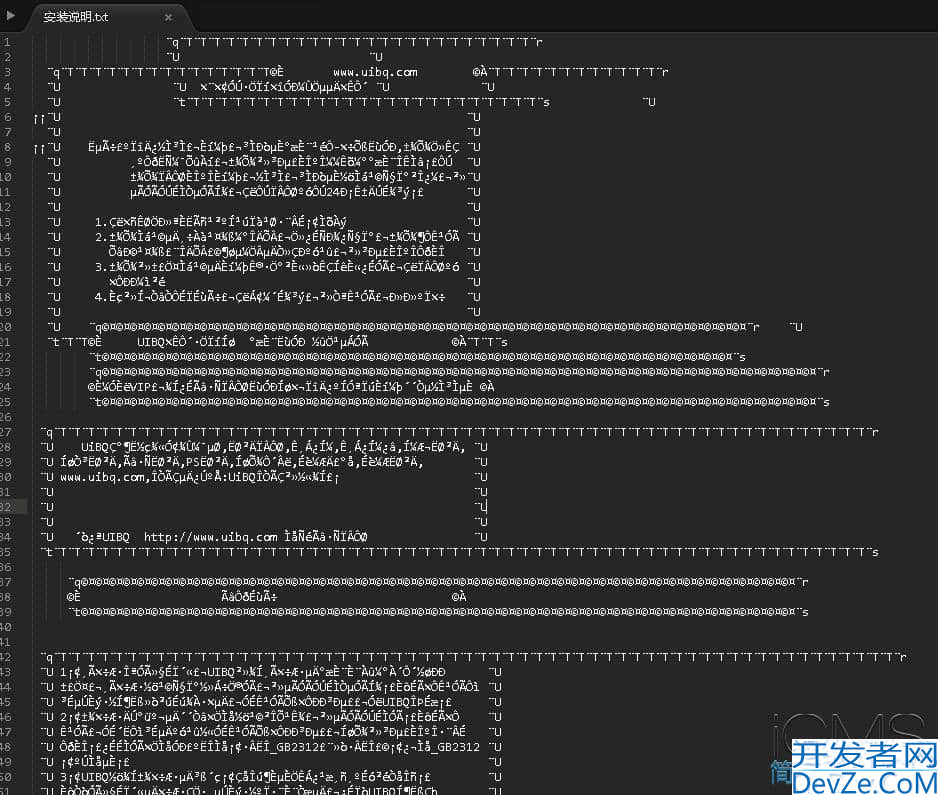Python3的进程和线程你了解吗
目录
- 1.概述
- 2.多进程
- 3.子进程
- 4.进程间通信
- 5.多线程
- 6.Lock
- 7.ThreadLocal
- 8.进程VS线程
- 9.分布式进程
- 总结
1.概述
""" 基础知识: 1.多任务:操作系统可以同时运行多个任务; 2.单核CPU执行多任务:操作系统轮流让各个任务交替执行; 3.一个任务即一个进程(process),如:打开一个浏览器,即启动一个浏览器进程; 4.在一个进程内,要同时干多件事,需要同时运行多个子任务,把进程内的子任务称为"线程(Thread)"; 5.每个进程至少做一件事,因此,一个进程至少有一个线程; 同时执行多线程的解决方案: a.启动多个进程,每个进程虽然只有一个线程,但多个进程可以一块执行多个任务; b.启动一个进程,在一个进程内启动多个线程,多个线程一块执行多个任务; c.启动多个进程,每个进程启动多个线程; 即多任务的实现方式: a.多进程模式; b.多线程模式; c.多进程+多线程模式; """
2.多进程
import os
print("Process (%s) start..." % os.getpid())
"""
只能在linux/Unix/Mac上工作
pid = os.fork()
if pid == 0:
print("I am child process (%s) and my parent is %s." % (os.getpid(), os.getppid()))
else:
print("I (%s) just created a child process (%s)." % (os.getpid(), pid))
"""
print("Hello.")
# multiprocessing:跨平台多线程模块
# process_test.py文件,在交互下python process_test.py
from multiprocessing import Process
import os
def run_process(name):
print("Run child process %s (%s)..." % (name, os.getpid()))
if __name__ == "__main__":
print("Parent process %s." % os.getpid())
p = Process(target = run_process, args = ("test",))
print("Child process will start.")
p.start()
p.join() # join()方法可以等待子进程结束后再继续往下运行,用于进程间的同步
print("Child process end.")
# 结果输出:
Parent process 28340.Child process will start.Run child process test (31152)...Child process end.
# Pool:用进程池批量创建子进程
# process.py文件,交互下python process.py
from multiprocessing import Pool
import os, time, random
def long_time_task(name):
print('Run task %s (%s)...' % (name, os.getpid()))
start = time.time()
time.sleep(random.random() * 3)
end = time.time()
print('Task %s runs %0.2f seconds.' % (name, (end - start)))
if __name__=='__main__':
print('Parent process %s.' % os.getpid())
p = Pool(4)
for i in range(5):
p.apply_async(long_time_task, args=(i,))
print('Waiting for all subprocesses done...')
p.close()
p.join()
print('All subprocesses done.')
# 结果输出:
Parent process 31576.Waiting for all subprocesses done...Run task 0 (20416)...Run task 1 (15900)...Run task 2 (24716)...Run task 3 (31148)...Task 2 runs 0.72 seconds.Run task 4 (24716)...Task 4 runs 1.03 seconds.Task 3 runs 1.82 seconds.Task 1 runs 2.73 seconds.Task 0 runs 2.82 seconds.All subprocesses done.
3.子进程
# subprocess模块:启动一个子进程,控制其输入和输出
# subprocess_test.py文件,注:文件名不要和模块名相同,否则报错
import subprocess
print("$ nslookup www.python.org")
r = subprocess.call(["nslookup", "www.python.org"])
print("Exit code:", r)
# 结果输出:
$ nslookup www.python.org服务器: cache-a.guangzhou.gd.cnAddress: 202.96.128.86非权威应答:名称: www.python.orgAddresses: 2a04:4e42:1a::223 151.101.72.223Exit code: 0
# 子进程需要输入,通过communicate()方法
import subprocess
print("$ nslookup")
p = subprocess.Popen(["nslookup"], stdin = subprocess.PIPE, stdout = subprocess.PIPE, stderr = subprocess.PIPE)
output, err = p.communicate(b"set q = mx\npython.org\nexit\n")
print(output.decode("gbk"))
print("Exit code:", p.returncode)
# 结果输出:
$ nslookup默认服务器: cache-a.guangzhou.gd.cnAddress: 202.96.128.86> Unrecognized command: set q = mx> 服务器: cache-a.guangzhou.gd.cnAddress: 202.96.128.86名称: python.orgAddress: 138.197.63.241> Exit code: 0
4.进程间通信
# 在父进程中创建两个子进程,一个往Queue里写数据,一个从Queue里读数据
# queue_test.py文件,交互下python queue_test.py
from multiprocessing import Process, Queue
import os, time, random
def write(q):
print("Process to write:%s" % os.getpid())
for value in ["W", "I", "L", "L", "A", "R", "D"]:
print("Put %s to queue..." % value)
q.put(value)
time.sleep(random.random())
def read(q):
print("Process to read:%s" % os.getpid())
while True:
value = q.get(True)
print("Get %s from queue." % value)
if __name__ == "__main__":
# 父进程创建Queue,并传给各个子进程
q = Queue()
pw = Process(target = write, args = (q,))
pr = Process(target = read, args = (q,))
# 启动子进程pw,写入
pw.start()
# 启动子进程pr,读取
pr.start()
# 等待pw结束
pw.join()
# pr进程是死循环,无法等待其结束,需要强行终止
pr.terminate()
# 结果输出:
Process to write:15720Process to read:21524Put W to queue...Get W from queue.Put I to queue...Get I from queue.Put L to queue...Get L from queue.Put L to queue...Get L from queue.Put A to queue...Get A from queue.Put R to queue...Get R from queue.Put D to queue...Get D from queue.
5.多线程
# 线程库:_thread和threading
# 启动一个线程:即把一个函数传入并创建一个Thread实例,然后调用start()开始执行
# 任何进程默认启动一个线程,该线程称为主线程,主线程可以启动新的线程
# current_thread()函数:返回当前线程的实例;
# 主线程实例名字:MainThread;
# 子线程名字的创建时指定,如果不指定,则自动给线程命名为Thread-1、Thread-2...
import time, threading
def loop():
print("Thread %s is running..." % threading.current_thread().name)
n = 0
while n < 5:
n = n + 1
print("Thread %s >>> %s" % (threading.current_thread().name, n))
time.sleep(1)
print("Thread %s ended." % threading.current_thread().name)
print("Thread %s is running..." % threading.current_thread().name)
thread1 = threading.Thread(target = loop, name = "LoopThread")
thread1.start()
thread1.join()
print("Thread %s ended." % threading.current_thread().name)
# 结果输出:
Thread MainThread is running...Thread LoopThread is running...Thread LoopThread >>> 1Thread LoopThread >>> 2Thread LoopThread >>> 3Thread LoopThread >>> 4Thread LoopThread >>> 5Thread LoopThread ended.Thread MainThread ended.
6.Lock
# 多进程:同一个变量,各自有一份拷贝存在于每个进程中,互不影响;
# 多线程:所有变量由所有线程共享,任何一个变量可以被任何一个线程修改;
# 多线程同时操作一个变量
# 多运行几次,发现结果不为0
import time, threading
balance = 0
def change_it(n):
global balance
balance = balance + n
balance = balance - n
def run_thread(n):
# 线程交替执行,balance结果不一定为0
for i in range(2000000):
change_it(n)
thread1 = threading.Thread(target = run_thread, args = (5,))
thread2 = threading.Thread(target = run_thread, args = (8,))
thread1.start()
thread2.start()
thread1.join()
thread2.join()
print(balance)
# 结果输出:
# 5(各自不同)
# 确保balance计算正确,需要给change_it()上一把锁
# 当线程开始执行change_it()时,该线程获得锁,其他线程不能同时执行change_it(),
# 只能等待,直到锁被释放,获得该锁后才能改;
# 通过threading.Lock()创建锁
import time, threading
balance = 0
lock = threading.Lock()
def change_it(n):
global balance
balance = balance + n
balance = balance - n
def run_thread(n):
for i in range(2000000):
lock.acquire()
try:
change_it(n)
finally:
# 释放锁
lock.release()
thread1 = threading.Thread(target = run_thread, args = (5,))
thread2 = threading.Thread(target = run_thread, args = (8,))
thread1.start()
thread2.start()
thread1.join()
thread2.join()
print(balance)
# 结果输出:
# 0
7.ThreadLwww.cppcns.comocal
# 多线程环境下,每个线程有自己的数据;
# 一个线程使用自己的局部变量比使用全局变量好;
import threadinwww.cppcns.comg
# 创建全局ThreadLocal对象
local_school = threading.local()
def process_student():
# 获取当前线程关联的student
std = local_school.studentwww.cppcns.com
print("Hello,%s (in %s)" % (std, threading.current_thread().name))
def process_thread(name):
# 绑定ThreadLocal的student
local_school.student = name
process_student()
thread1 = threading.Thread(target = process_thread, args = ("Willard",), name = "Thread-1")
thread2 = threading.Thread(target = process_thread, args = ("WenYu",), name = "Thread-2")
thread1.start()
thread2.start()
thread1.join()
thread2.join()
# 结果输出:
# Hello,Willard (in Thread-1)# Hello,WenYu (in Thread-2)
8.进程VS线程
# 进程和线程优缺点: # 1.要实现多任务,会设计Master-Worker模式,Master负责分配任务,Worker负责执行任务, # 在多任务环境下,通常是一个Master,多个Worker; # a.如果使用多进程实现Master-Worker,主进程即Master,其他进程即Worker; # b.如果使用多线程实现Master-Worker,主线程即Master,其他线程即Worker; # 2.多进程优点:稳定性高,一个子进程崩溃不会影响主进程和其他子进程; # 3.多进程缺点:创建进程的代价大,操作系统能同时运行的进程数有限; # 4.多线程缺点:任何一个线程崩溃,可能直接造成整个进程崩溃; # 线程切换: # 1.依次完成任务的方式称为单任务模型,或批处理任务模型; # 2.任务1先做n分钟,切换到任务2做n分钟,再切换到任务3做n分钟,依此类推,称为多任务模型; # 计算密集型 VS IO密集型 # 1.计算密集型任务:要进行大量的计算,消耗CPU资源,如:对视频进行高清解码等; # 2.IO密集型任务:涉及到网络、磁盘IO的任务,均为IO密集型任务; # 3.IO密集型任务消耗CPU少,大部分时间在等待IO操作完成; # 异步IO # 1.事件驱动模型:用单进程单线程模型来执行多任务; # 2.Python语言中,单线程的异步编程模型称为协程;
9.分布式进程
"""
实例:
有一个通过Queue通信的多进程程序在同一机器上运行,但现在处理任务的进程任务繁重,
希望把发送任务的进程和处理任务的进程发布到两台机器上;
"""
# task_master_test.py
# 交互环境中:python task_master_test.py
import randomwww.cppcns.com, time, queue
from multiprocessing.managers import BaseManager
# 发送任务的队列
task_queue = queue.Queue()
# 接收结果的队列
result_queue = queue.Queue()
def return_task_queue():
global task_queue
return task_queue
def return_result_queue():
global task_queue
return task_queue
# 从BaseManager继承的QueueManager
class QueueManager(BaseManager):
pass
if __name__ == "__main__":
# 把两个Queue注册到网络上,callable参数关联Queue对象
QueueManager.register("get_task_queue", callable = return_task_queue)
QueueManager.register("get_result_queue", callable = return_result_queue)
# 绑定端口5000,设置验证码"Willard"
manager = QueueManager(address = ("127.0.0.1", 5000), authkey = b"Willard")
# 启动Queue
manager.start()
# 获得通过网络访问的Queue对象
task = manager.get_task_queue()
result = manager.get_result_queue()
# 放任务进去
for i in range(10):
n = random.randint(0, 10000)
print("Put task %d..." % n)
task.put(n)
# 从result队列读取结果
print("Try get results...")
for i in range(10):
r = result.get(timeout = 10)
print("Result:%s" % r)
# 关闭
manager.shutdown()
print("Master Exit.")
# task_worker_test.py文件
# 交互环境python task_worker_test.py
import time, sys, queue
from multiprocessing.managers import BaseManager
# 创建QueueManager
class QueueManager(BaseManager):
pass
QueueManager.register("get_task_queue")
QueueManager.register("get_result_queue")
# 连接到服务器
server_address = "127.0.0.1"
print("Connect to server %s..." % server_address)
# 端口和验证码
m = QueueManager(address = (server_address, 5000), authkey = b"Willard")
# 网络连接
m.connect()
# 获取Queue对象
task = m.get_task_queue()
result = m.get_result_queue()
# 从task队列取任务,把结果写入result队列
for i in range(10):
try:
n = task.get(timeout = 1)
print("Run task %d * %d..." % (n, n))
r = "%d * %d = %d" % (n, n, n * n)
time.sleep(1)
result.put(r)
except Queue.Empty:
print("Task queue is empty.")
print("Worker Exit.")
总结
本篇文章就到这里了,希望能够给你带来http://www.cppcns.com帮助,也希望您能够多多关注我们的更多内容!





 加载中,请稍侯......
加载中,请稍侯......
精彩评论